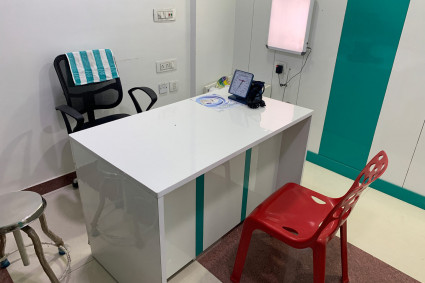
Toilet training is one of the milestones in a child's life, but it can be a frustrating experience—especially for children who have developmental or behavioral delays. To many parents, it can be a nightmare, with trial and error, frustration, and confusion about what works best. That is where Applied Behavior Analysis (ABA) therapy becomes indispensable.
ABA therapy gives systematic, scientifically based approaches to instructing essential life skills—like toilet training—on an individualized basis with reinforcement. Breaking the process into step-by-step units and rewarding each success, ABA therapy helps children become independent and stresses parents out less.
In this article, we’ll explore how ABA therapy can help your child successfully master toilet training, the methods professionals use, and how parents can actively participate in the process.
Why Toilet Training Can Be Challenging
Toilet training is a complex skill that combines physical readiness, communication, and routine building. Some of the most common challenges include:
- Trouble reading body cues – Some children simply are not ready to understand when they need to go yet.
- Communication challenges – If a child is struggling to communicate what they need, it will be hard to signal the best time to go.
- Sensitivities in the environment – The flushing of toilets, the feel of toilet seats, or unfamiliar bathrooms can be overwhelming.
- Routines disruptions – Unpredictable routines can increase the difficulty for a child in forming the habit.
In children with developmental disabilities, these challenges can be even more pronounced. ABA therapy addresses each challenge through the use of a tailored approach that makes steady progress at the child's pace.
How ABA Therapy Helps Toilet Train
ABA therapy relies on breaking down difficult tasks into easy, small steps. Each step is reinforced and rewarded and practiced again in order to create confident and consistent behavior in children.
Here is how ABA therapy is utilized for toilet training:
1. Readiness Evaluation
Before training begins, a Board Certified Behavior Analyst (BCBA) evaluates the child's stage of development, communication, and physical readiness. This optimizes the possibilities that training will be maximally effective when initiating.
2. Creating an Individualized Plan
Every child is different, and ABA therapists create a plan according to your child's needs. These can be:
- Frequent bathroom visits
- Training body signal recognition
- Breaking down toilet routines into steps
- Adding preferred reinforcers (stickers, praise, small rewards)
3. Employing Positive Reinforcement
Positive reinforcement is the foundation of ABA therapy. Every time a child completes a step—sitting on the toilet, flushing, or washing hands—the child is praised or rewarded. This strengthens the likelihood of doing it again.
4. Prompting and Fading
Verbal prompts, physical prompts, or visual cues (like picture schedules) can be used by therapists to prompt the child through each step. Gradually, with the passage of time, prompts are faded to promote independence.
5. Tracking Data and Adjustments
ABA therapists track each attempt, successful or not, and adjust as required. If a child is struggling with a step, the therapist can divide the process into smaller steps or intensify reinforcement.
Important Steps to the ABA Toilet Training Process
Step 1: Establishing Comfort in the Bathroom
Some children need time to simply become used to sitting in the bathroom. Therapists set the environment up welcoming, using familiar objects, playful decor, and positive experiences.
Step 2: Toilet Routine
This can involve sitting on the toilet when still clothed, and eventually, introducing the idea of using it. The goal is to produce comfort and familiarity.
Step 3: Bathroom Breaks
ABA therapy also commonly uses fixed intervals of time—e.g., every 30–60 minutes—to go to the toilet with the child. This enables the child to learn the routine association of the bathroom.
Step 4: Reinforcing Each Success
Whenever the child successfully uses the toilet, they are immediately rewarded or praised. Over time, reinforcement is more for independence than for each step.
Step 5: Teaching Related Skills
Toilet training isn't complete at flushing. ABA therapy also instructs:
- Proper wiping
- Flushing the toilet
- Hand washing
- Clothing care independently
- Parent Involvement is Crucial
While ABA therapists provide structure and professional oversight, parents play a crucial role in reinforcing learning at home. Consistency in home life and therapy sessions complements the child to progress faster.
Parents can:
- Follow the same routine as recommended by the therapist.
- Use the same reinforcement system (sticker, praise, reward).
- Exercise patience and positivity despite setbacks.
- Report progress and setbacks on a regular basis to the therapy team.
Myth 1: It Works Overnight
Reality: Toilet training is a process that takes time. ABA therapy is systematic, focusing on steady, long-term progress rather than cutting corners.
Myth 2: It's Only for Children with Special Needs
Reality: While ABA works especially well with children who have developmental problems, its methods can be utilized by any child who is struggling with toilet training.
Myth 3: Rewards Create Dependence
Reality: Reinforcement is gradually phased out when the child has become more independent, shifting the incentive from rewards to self-sufficiency.
Benefits of Toilet Training with ABA Therapy
- Less family stress – Systematic instruction prevents confusion and frustration.
- More independence for the child – Mastery of a life skill builds confidence.Strategies work on your child's unique problems.
- Better generalization – Skills learned in therapy generalize well to home, school, and public settings.
When to Seek Professional Help
If your child is over three years old and not making progress with toilet training even with regular effort, it might be the right time to look for professional ABA intervention. Indications that assistance is required include:
- Regular accidents even with break times
- Refusal to use the toilet or fear of it
- Difficulty expressing needs
- Inability to learn simple bathroom habits
Looking for ABA providers in Missouri City, TX? We offer personalized ABA therapy to help children build skills, gain independence, and thrive.
Final Thoughts
Toilet training is a key step towards independence, and while trying, ABA therapy provides a clearly outlined, encouraging blueprint. With personalized plans, rewarding feedback, and continued coordination between parents and therapists, kids are able to overcome toilet training problems and gain the confidence to master this essential life skill on their own.




